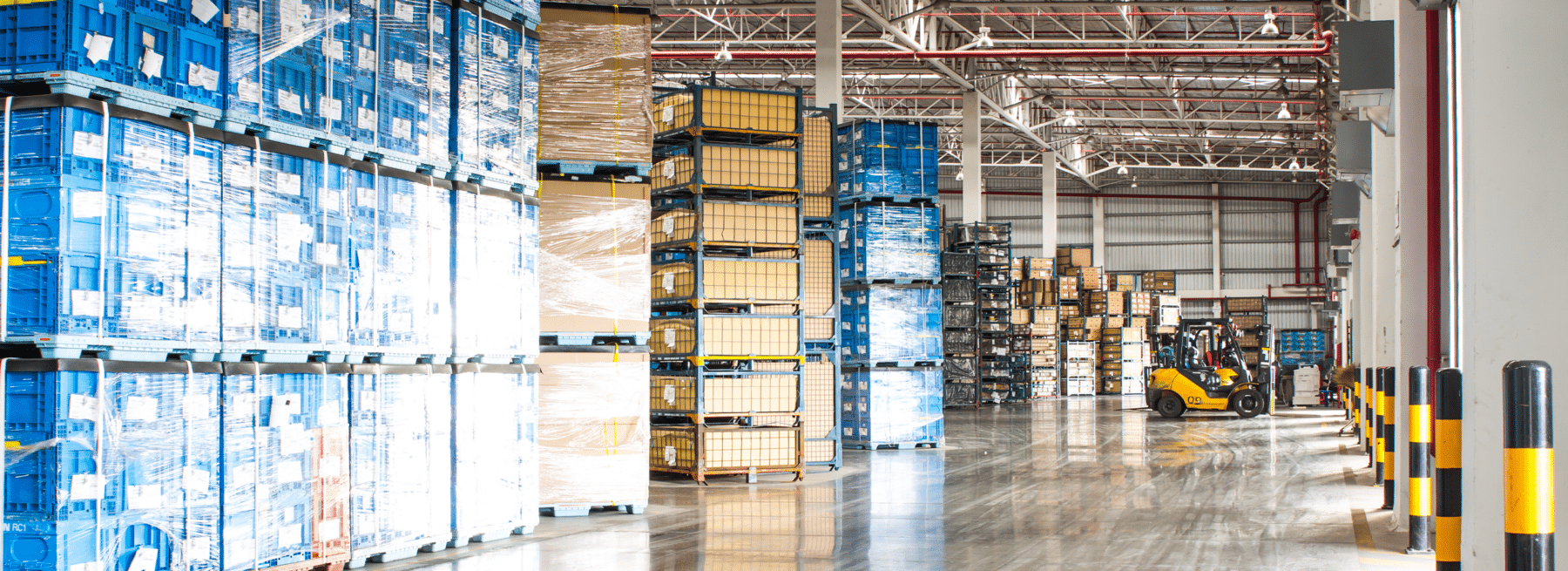Facilities need to continue to remain vigilant about warehouse security. According to a CargoNet report, warehouses are one of the top two targeted location types out of the thefts reported in the third quarter of 2021. The other also affects warehouse facilities since they are stops for trucks. Those trucks may be carrying your materials or manufactured goods.
The numbers are most likely worse than this because many warehouse facilities won’t report a theft of any kind. They are afraid it will cause their insurance premiums to climb or hurt the company’s reputation. Moreover, there are many systems tracking this kind of data. They don’t all categorize supply chain and cargo thefts from warehouses in the same way.
A TT News story quotes a representative from a logistics company who said that thefts are growing more sophisticated thanks to organized crime rings. They observe locations that house a lot of cargo and watch the trucks coming and going. Then, they select their target and follow those trucks until they make a stop. The also article indicates thieves are taking bigger risks in targeting more valuable loads.
Another problem cropping up is the rise of identity theft, fictitious pickups, and other fraudulent tactics. Multiple stories quote security experts who believe the U.S. and Canada will be dealing with cargo and supply chain theft for a few years.
It’s not just the damage from theft that’s a problem. Natural disasters are wreaking havoc on warehouses and causing a lot of damage. NOAA’s National Centers for Environmental Information says nine events for the first half of 2022 cost almost $1 billion for every event. The data shows the year 2021 experienced 20 events that cost $152 billion and led to 724 deaths. This is the second highest in the number of events, the third highest in cost, and the sixth highest in deaths.
What this means is that warehouse facilities need to protect their cargo and trucks from theft and damage. Here are eight best practices to help prevent theft and damage.
1. Monitor for hazards
Every location is affected differently by weather-related damage. For example, Texas is more susceptible to tornados than many other states. The state also deals with flooding. One warehouse had to close after its facility became flooded after severe weather. They could not manufacture anything until they confirmed it was safe to do so.
It’s important for managers at warehouse facilities to know their area’s weather challenges. This way they can budget for preventive measures and mitigate any damage quickly.
2. Install and Maintain Proper Lighting
Another way to lower your risk of damage and theft is by installing the right kind of lighting in the right places. Properties with limited or no lighting attract thieves because they know it will be harder to be seen.
There is an art and science to lighting. As such, it would be a good move to work with an experienced security consultant to design an effective lighting solution. Just as important, do regular checks on your lighting to verify all of it works or get it repaired.
3. Conduct Regular Pest Control Treatment
Insects and rodents can cause a lot of damage to a warehouse. They chew away at buildings and infrastructure. Moreover, rats can cause fires and spread diseases. The Centers for Disease Control and Prevention indicates that mice and rats spread more than 35 diseases. According to “Environmental and Economic Costs of Nonindigenous Species in the United States,” rats have caused $20 billion worth of damage each year.
Ensure your warehouse facility gets regular pest control treatment. Also, conduct regular inspections to stay proactive.
4. Educate Drivers
Considering the high rate of fraudulent pickups and theft occurring at truck stops, educating drivers and creating processes are key to preventing theft and damage. Truck drivers need to understand that the simple act of not locking the doors while they go do something quickly can lead to theft. This type of theft is rarely reported because no one can confirm where the theft occurred, which makes it difficult to trace.
Driver training can help prevent damage and theft. A lot of the tips are common sense. However, people forget about these things in their daily grind. It’s better to educate the drivers than to assume they know these things.
One tip to share with them is to avoid stopping anywhere within 200 to 250 miles of the pickup origin. This is known as the red zone. Organized crime gangs are prepared to follow trucks for as long as possible to catch an opportunity to pilfer the cargo. Advise drivers to be prepared to travel at least 250 miles before stopping. Remind them to verify they have enough fuel, drinks, and snacks to last them until they get reach outside the red zone.
Explain why it’s critical to always keep doors locked and check the security seals. They can help deter theft or at least slow down the criminals. They’d rather go find another truck with fewer barriers, especially one that’s unlocked.
5. Secure Trucks with a Verification Process
Create and implement a verification process to confirm truck and company information. This can help deter fraudulent pickups. The process should require truck companies to provide specific information prior to picking up the load. This includes the driver’s and carrier’s names, truck numbers, and insurance information. Simply put, if a truck driver arrives in fewer than 24 hours or without notice, then do not release the shipment to them.
When the truck arrives, take pictures of the truck, driver, and bill of lading. Also, take down the driver’s fingerprints. If the driver refuses to cooperate, explain that this is a standard process, and you will not make exceptions.
You can check company information and identities with Federal Motor Carrier Safety Administration (FMSCA) and the Internet. You’d benefit from regularly communicating with your partners, vendors, and customers.
You can automate the check-in and verification process with automated data entry, gate and access control system, and remote video surveillance system. The integration of the access control can track the truck’s movement from entry to exit and capture identifying information.
6. Automate Data Entry
Some warehouse facilities and loading docks use mobile devices with barcode scanners or RFID readers to track goods when they arrive or leave the dock. With the widespread availability of technology, it’s more affordable than ever and no one should rely on outdated, error-prone manual data entry processes.
7. Add an Access Control System
An access control system, like its name says, controls who has access. The system grants and revokes access to buildings and specific areas in a warehouse facility. Some access control systems can grant access based on a time limit or schedule unlocks.
Effective gate and access control management integrate remote video surveillance. Access control manages who can enter the perimeter, building, and limited-access rooms. Remote video surveillance monitors events and potential security breaches in real time. More on that next.
Security cameras put eyes on the people entering the property. The monitoring operators watching the cameras can provide access without being in the same facility or same city.
8. Use Remote Video Surveillance
Video surveillance can monitor everyone who enters and leaves the property. A trained monitoring operator can watch the cameras positioned at the entry point. When a truck pulls in, the monitoring operator can ask for information from the driver and confirm everything is good. During this process, the camera scans the truck for identification information.
This process works for Customs-Trade Partnership Against Terrorism (C-TPAT) inspections. This involves checking the tractors and trailers. Typically, security guards do these inspections by doing a review of the entire trailer. After the driver passes all inspections, the operator remotely opens the gate and lets the truck in.
Video surveillance systems make it possible to watch over the entire perimeter without security guards. Unlike traditional alarm systems, video surveillance takes a proactive approach to security and can help deter damage. Security experts can post cameras around the warehouse facility to watch over the gate, trucks, loading docks, parking, and the building’s interior.
Remote video surveillance does more than help prevent damage. It can help identify who is responsible. For example, someone driving a company’s fleet truck hit a car during daytime hours. Onsite, no one saw the incident. But the trained monitoring operator watching the cameras in a remote location caught the accident.
The operator zoomed in on the truck to document the fleet number, license plate, and driver’s face. Some warehouse facilities use security technologies like long-range surveillance and license plate recognition for capturing identifying information.
The system with its high-resolution cameras can save all the recordings for later reviewing and sharing with law enforcement and anyone else who needs to see the evidence. If a company learns about damage long after it happened, they can have analysts search the video recordings to figure out what happened.
Video surveillance is unlike any other security solution because it’s proactive in helping to minimize damage, maximize security for your warehouse and trucks, and reduce liability. During severe storms, the system can monitor for leaks and fire. The sooner it’s caught, the less damage the facility might incur. Video surveillance often leads to a fast ROI in a matter of months.
To learn more about technology that protects warehouses from damage, check out this paper on the effects of crime on the transportation industry and warehouses.

